Announcements
Welcome to Care of Magical Creatures 501!
This is the fourth year of Care of Magical Creatures.
If you have any questions about the course, please contact Professor Aspen, who has kindly accepted to be in charge of it while a new professor is appointed by the Ministry of Magic.
Lesson 5) Do The Hippogriff
Do The Hippogriff
Running a few minutes late, Professor Cattercorn briskly bounded through the door of the classroom. The class stared at her, amused, as she carelessly tossed her satchel on her desk, messing up the once neat stack of papers to be graded. She then spun around and tucked her hair behind her ears. She was grinning from ear to ear. This was a big lesson after all.
Hello everyone! We’re running a little bit behind, and that’s my fault! But there are quite a few interesting activities planned for you all at the end of the lecture today, so I’m going to make this quick!
This is a lesson that I have been wanting to teach ever since I joined the CoMC teaching team, and it’s finally happening. I know that you are all going to enjoy learning about this creature just as much as I will enjoy teaching about it.
Keep in mind that although this should be a fun lesson, your midterms are immediately after, so do not lose focus. As always, I have the utmost faith in you all. Now let’s get to it, and start learning about the much anticipated hippogriff.
Hippogriffs: Calendar Models
What is a hippogriff?
There is a lot of information on the hippogriff, so I’m going to cover as much as I can in the little time we are allowed!
Native to Europe, hippogriffs are Beasts, and the Ministry of Magic gives them an XXX classification. The word hippogriff comes from the Greek word hippos meaning “horse” and the Italian word grifo meaning “griffin”; thus the hippogriff is basically a horse griffin. Griffins and hippogriffs are not to be confused, though, as the griffin has features of a lion, but a hippogriff has the lion features replaced with horse features. Take a look at this picture and notice the differences.
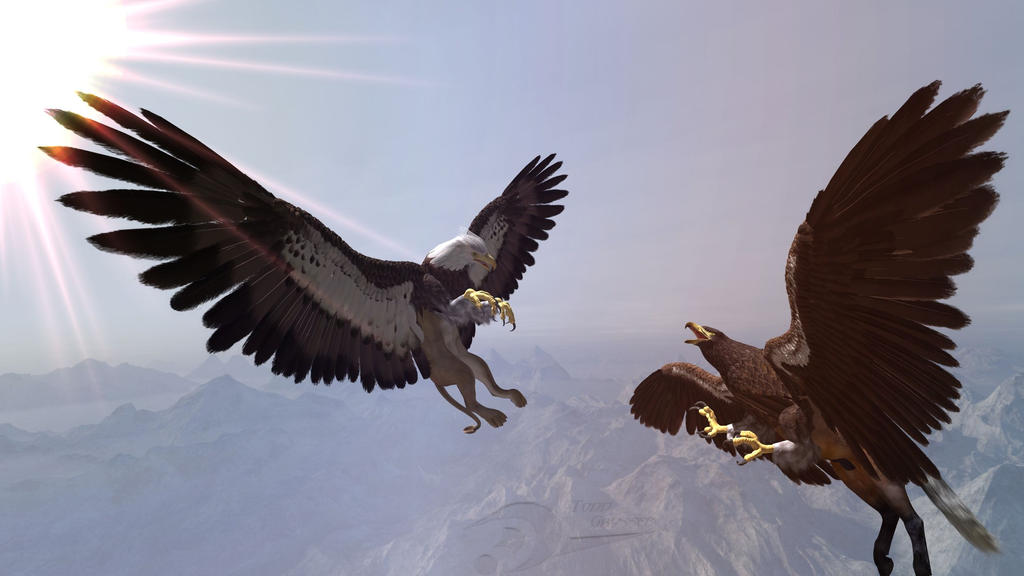
The front end of the hippogriff’s body is essentially that of an eagle’s. Its head and wings, of course, are the most notable bird-like features. But also take a look at the legs. The front legs are bird-like, complete with talons. The hind legs, however, are hooved. The body of the hippogriff, including the hind legs and the tail, resembles a horse!
Let’s explore the appearance of hippogriffs in a little more depth. They have amber to orange eyes, and they have magnificent and impressive beaks and talons. Their beaks are their most intimidating feature and are the color of steel. The talons can be up to six inches (about 15 centimeters) long and just a scratch can cause you some pretty intense pain.
A hippogriff’s coat is very intricate. The front half of the creature begins as feathers and once you reach the near midway point on the body, it transitions very elegantly to hair. It is a thing of beauty, especially when you are able to see and compare two hippogriffs of different colors. There are several different color variations for these creatures. Some of the most popular are dark grey, pitch black, mottled white, strawberry roan, bronze, and chestnut. Here are some examples! Do you have a favorite?
| Color | Image |
| Black |  |
| Bronze |  |
| Mottled White |  |
| Grey |  |
| Strawberry Roan |  |
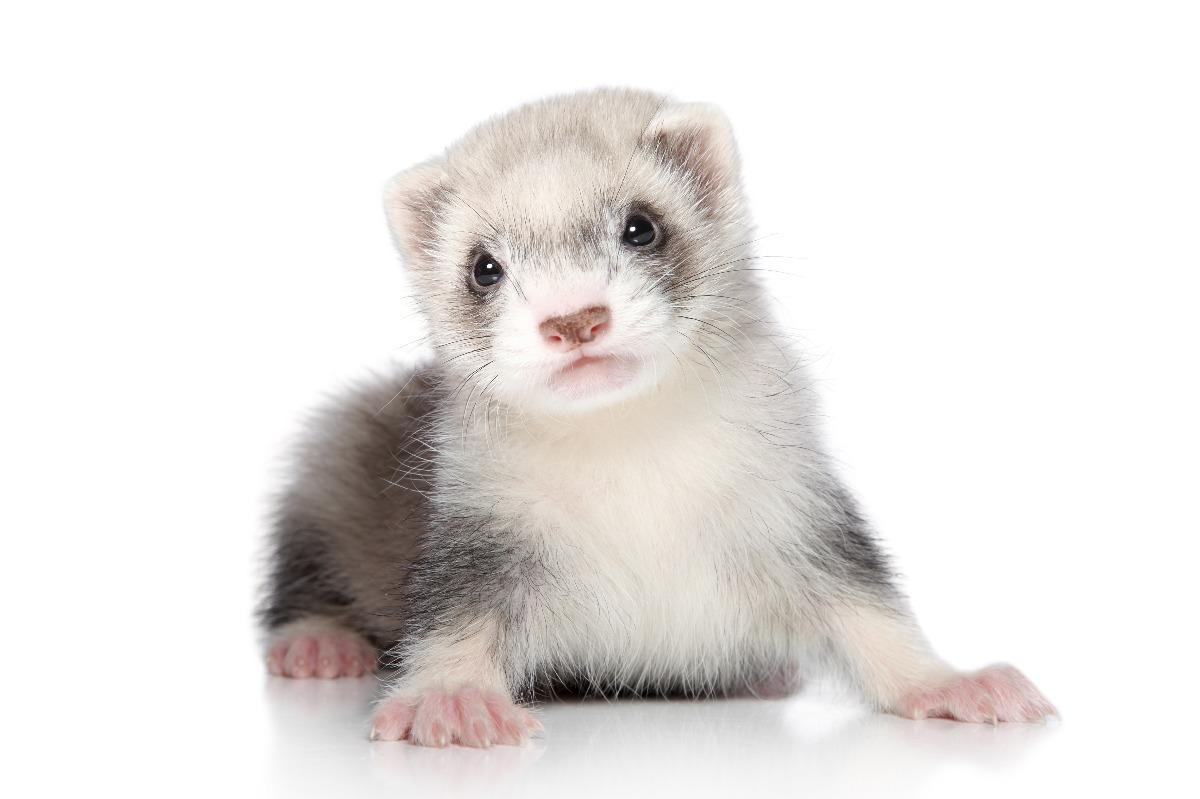 Diet
Diet
Hippogriffs are carnivores. They typically eat insects and birds and will sometimes even accept fish, depending on the particular beast’s preference. Most of them prefer, however, to eat small rodents and other mammals - specifically ferrets. hippogriffs have been known to scavenge for worms as a last resort if they do not have access to any other food. When keeping or handling a hippogriff, it is best to determine that particular hippogriff’s preferences. If you know that your bronze hippogriff prefers small birds, and your mottled white hippogriff prefers ferrets, you can help diffuse any potentially harmful situation by distracting them with their favorite food.
Reproduction
Hippogriffs came into creation when a male griffin and a female horse mated. We discussed griffins briefly earlier in the lesson, so let’s revisit that really quickly! Griffins have the head and front legs of an eagle, and the rest of the body is that of a lion. So the offspring of a griffin and a horse is a combination of the two creatures. Instead of the lion’s hind legs and tail, it is a horse’s.
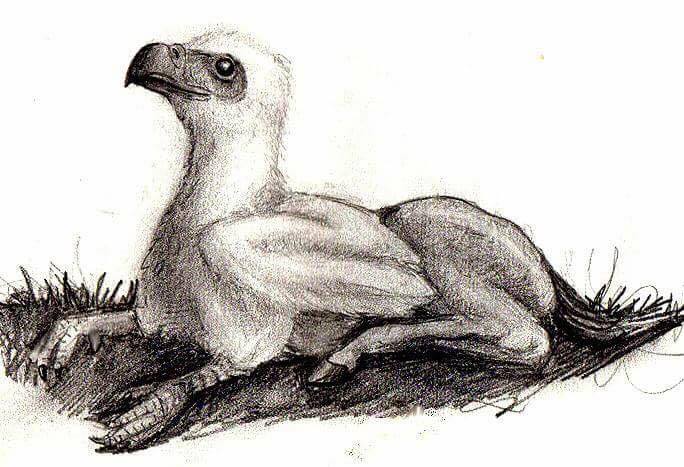
A mottled white hippogriff foal
The mating habits between two hippogriffs is simpler than you would think, however. The process is very close to how horses reproduce. However, there is no live birth, hippogriffs actually lay eggs! When a mare reaches sexual maturity and is ready to mate, she will begin to build a nest on the ground. To attract her mate, she will urinate and reveal her genitalia to the stallion she wants to attract. If the male hippogriff is interested, he will approach her and smell her urine to see if the female is ready to breed. If he determines that she is sexually mature, the two will mate.
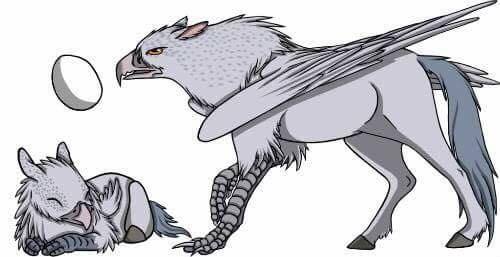
Following copulation, the female will lay an egg - always just one egg - in her nest. The egg is very delicate and large. It will typically hatch in about 24 hours, although some have taken up to 72 hours to hatch. Once the egg hatches, out will emerge a foal. Hippogriffs are fast learners, so flight comes easily to their young. They will be able to fly within just seven days. However, the foal won’t be ready to travel long distances with its parents until it is about seven or eight months old.
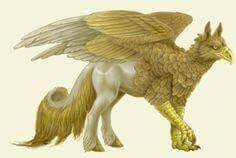 There are jobs for those who enjoy working with hippogriffs as well. Hippogriff breeders are praised highly for their work. They usually breed the creatures for show competitions or for continuing a family bloodline. The Hippogriff National Show is one of the largest magical creature events in Great Britain. Here’s a little known fact: the famous magizoologist Newt Scamander had close family that were fancy hippogriff breeders. Some of the most beautifully bred hippogriffs are even styled and dressed to have their photograph taken for popular wizarding calendars.
There are jobs for those who enjoy working with hippogriffs as well. Hippogriff breeders are praised highly for their work. They usually breed the creatures for show competitions or for continuing a family bloodline. The Hippogriff National Show is one of the largest magical creature events in Great Britain. Here’s a little known fact: the famous magizoologist Newt Scamander had close family that were fancy hippogriff breeders. Some of the most beautifully bred hippogriffs are even styled and dressed to have their photograph taken for popular wizarding calendars.
Respect and Handling
If you don’t take away anything else from this lesson today, please at least remember what I am about to tell you now. Hippogriffs are some of the most prideful creatures you will ever learn about. When encountering one, that knowledge must always be directly accessible in your mind. These creatures demand respect.
When you approach a hippogriff, remember to always make eye contact. You want to make sure that you never blink, as this is seen as an insult to the creatures. What happens when you insult a hippogriff? We’ll get to that momentarily.
 As you are making eye contact, unbroken, slowly approach the hippogriff. Walking too fast can unsettle it. Once you are about 15 feet (4.5 meters) away from the hippogriff, stop walking. Keeping eye contact the entire time, bow to the creature and stay down until it responds. If it does not accept your advance, it may squawk at you and fluff up its feathers. If this happens, slowly back away. When doing this, walk backwards and maintain eye contact! Turning your back on a hippogriff is one of the most insulting things you can do.
As you are making eye contact, unbroken, slowly approach the hippogriff. Walking too fast can unsettle it. Once you are about 15 feet (4.5 meters) away from the hippogriff, stop walking. Keeping eye contact the entire time, bow to the creature and stay down until it responds. If it does not accept your advance, it may squawk at you and fluff up its feathers. If this happens, slowly back away. When doing this, walk backwards and maintain eye contact! Turning your back on a hippogriff is one of the most insulting things you can do.
Let’s say that you bowed correctly at a hippogriff, and it accepted your greeting. The hippogriff would bow back to you. Don’t stand up properly again until the creature comes up from its bow. Once you are standing up straight, you may slowly walk closer to the hippogriff. When you are within touching range, feel free to lift up your hand and rest it gently on its beak.
It is important to note that it is much more polite to let the hippogriff come to you first. It is not required, but it is recommended, especially if the beast is especially ornery or if you want it on your good side quicker.
Gaining a hippogriff’s trust can gain you lifetime loyalty from them. If they feel that you are threatened, they will protect you and attack anything trying to hurt you. Those who insult a hippogriff will also be attacked. They have several methods of defense. They can scratch you with their long talons or peck you. That beak can do some serious damage, so be mindful of your actions, always! They can also knock you to the ground and trample you, or kick you with their hind legs.
There are some strict laws that must be followed if you want to own or breed hippogriffs. If you choose to own them, you must have a special license. This goes for breeding them as well. You need two separate licenses for breeding and owning, however. It is also mandatory that anyone possessing a hippogriff must cast a Disillusionment Charm on each beast they own each day, as it wears off, so that it isn’t seen by Muggles. There are no exceptions to this law, even if you live in a wizarding village. Hippogriffs have to fly, too, so make sure they aren’t spotted by Muggles! Please also note that using hippogriffs as transportation is forbidden in the International Statute of Secrecy.
And now your former Mythology Professor Liria Morgan will be giving a short lecture about these beautiful creatures’ roles in Muggle mythology. Please give her a warm welcome!
Guest Lecture: Hippogriffs in Muggle Mythology
Hello students! I am so pleased to have been asked to speak with you today. I know you have lots to cover, so let’s jump right in!
Charlemagne
 Muggles first adopted hippogriffs (spelled hippogryphs in Muggle myths) into their mythologies after a few sightings in the Middle Ages. In stories of Charlemagne, King of the Franks and the uniter of post-Roman Empire Europe, it is said that he both rode a hippogriff as well as supplied them as mounts for his knights. They certainly would have made a formidable force, as seeing a creature such as that charge - even if it were not flying - would have instilled absolute terror into opposing armies and assured Charlemagne of a relatively easy victory. As Charlemagne was around before the International Statute of Secrecy was enacted, there is a fair chance that these so-called mythological stories may in fact be true.
Muggles first adopted hippogriffs (spelled hippogryphs in Muggle myths) into their mythologies after a few sightings in the Middle Ages. In stories of Charlemagne, King of the Franks and the uniter of post-Roman Empire Europe, it is said that he both rode a hippogriff as well as supplied them as mounts for his knights. They certainly would have made a formidable force, as seeing a creature such as that charge - even if it were not flying - would have instilled absolute terror into opposing armies and assured Charlemagne of a relatively easy victory. As Charlemagne was around before the International Statute of Secrecy was enacted, there is a fair chance that these so-called mythological stories may in fact be true.

Italian Renaissance Poet , Ludovico Ariosto
Possibly the most famous myth regarding hippogriffs is from the Italian Renaissance poet Ludovico Ariosto, who was most likely a wizard. Have a look at two of the stanzas from his famous romantic poem, Orlando Furioso - Canto IV:
|
XVIII No empty fiction wrought by magic lore, But natural was the steed the wizard pressed; For him a filly to griffin bore; High hippogryph. In wings and beak and crest, Formed like his sire, as in the feet before; But like the mare, his dam, in all the rest. Such on Riphæan hills, though rarely found, Are bred, beyond the frozen ocean’s bound. |
XIX Drawn by enchantment from his distant lair, The wizard thought but how to tame the foal; And, in a month, instructed him to bear Saddle and bit, and gallop to the goal; And execute on earth or in mid air, All shifts of manege, course and caracole; He with such labour wrought. This only real, Where all the rest was hollow and ideal. |
No doubt the author’s familiarity with an actual hippogriff featured prominently into his description, especially in terms of its parentage. Indeed, the description of the wizard in the poem is also extremely accurate, lending credence to the theory that Ariosto was a wizard himself. Given the time of Ariosto’s work (1532 for the final edition of Orlando Furioso, the year before his death), this mythical poem is the last known mention of a hippogriff in Muggle mythology as just over 100 years later, the International Statute of Secrecy was enacted.
Perhaps the most interesting fact regarding these and other Muggle myths regarding hippogriffs is the way that Muggles themselves reacted to them. While the Muggles seemed to be able to imagine a griffin, or perhaps they themselves had seen a griffin, the thought of one successfully mating with a filly was laughable. They simply thought that there was no way these two mortal enemies could possibly be forced to mate. While we know that concept to be false, so strongly did the Muggles of the medieval period resist the idea that hippogriffs were real that they had a saying: “Jungentur jam grypes equis.” Translated, this saying means “to cross griffins with horses” and would be the equivalent of the modern English saying “when pigs fly,” indicating something impossible in nature.
Well, I do hope you have enjoyed our brief foray into the mythology of hippogriffs! I shall return you to your professor for the rest of your lecture. Enjoy!
Closing
Thank you so much for joining us today Professor Morgan! I’m sure I speak for everyone today when I say that your lecture was truly enjoyable. Please come back soon!
Alright class! This concludes the first half of Year Five for Care of Magical Creatures. It is now time to begin your midterms. Put your things away - yes, even your quills and parchment.
Professor Cattercorn stood up and threw her satchel over her shoulder. She turned around to see the class quizzically waiting for their next directions. The excited look that they saw on their professor’s face earlier in the lesson had reappeared. She hurriedly motioned for her students to get up from their desks.
Professor Anne is waiting for us on the grounds. We mustn’t keep her waiting. Come on!
The students, nervously mumbling to each other, exited the classroom and followed Professor Cattercorn to the grounds near the forest. Like she had said, Professor Anne was patiently waiting. Professor Anne turned around to greet them with a small smile as her co-professor instructed the class to gather around so everyone could see and hear properly.
If you’ll all please stand around us, Professor Anne would like to give you some directions before we begin your midterm...
Main lesson content written by Professor Elizabeth Anne and Professor Aurelia Cattercorn
Guest lecture written by former Ancient Studies and Mythology professor Liria Morgan
All pictures are found using the Google Images search engine, and belong to their owners.
- COMC-401
Enroll


